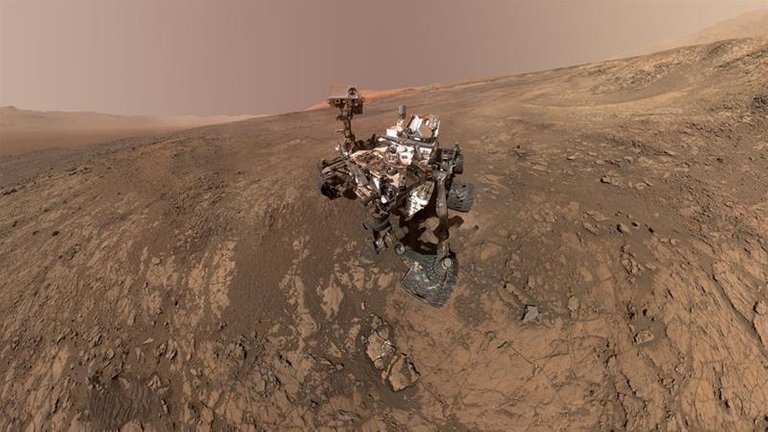
A NASA robot has discovered all the more building hinders for life on Mars, the most complex natural issue yet from 3.5 billion-year-old shakes on the surface of the red planet, the US space organization said on Thursday.
The unmanned Curiosity wanderer has additionally discovered expanding proof for regular varieties of methane on Mars, demonstrating the wellspring of the gas is likely the planet itself, or potentially its subsurface water.
The information, gathered through boring into the most reduced purpose of the red planet's Gale cavity, is a piece of the US space organization's recently enlarged look for natural particles that could show past life on the surface of Mars.
NASA to dispatch another wanderer
NASA's first declaration of the nearness of natural mixes on Mars came in 2014 when little levels of chlorinated methane mixes were identified.
"This is the principal extremely confided in discovery," Sanjeev Gupta, a teacher of Earth science at Imperial College London, said.
A NASA robot has discovered all the more building hinders for life on Mars, the most complex natural issue yet from 3.5 billion-year-old shakes on the surface of the red planet, the US space organization said on Thursday.
The unmanned Curiosity wanderer has additionally discovered expanding proof for regular varieties of methane on Mars, demonstrating the wellspring of the gas is likely the planet itself, or potentially its subsurface water.
The information, gathered through boring into the most reduced purpose of the red planet's Gale cavity, is a piece of the US space organization's recently enlarged look for natural particles that could show past life on the surface of Mars.
NASA to dispatch another wanderer
NASA's first declaration of the nearness of natural mixes on Mars came in 2014 when little levels of chlorinated methane mixes were identified.
"This is the principal extremely confided in discovery," Sanjeev Gupta, a teacher of Earth science at Imperial College London, said.
"What this new investigation is appearing in some detail is the revelation of perplexing and various natural mixes in the dregs. That doesn't mean life, however natural mixes are the building squares of life."
"This is the first occasion when we have recognized such a various cluster of these sorts of things," he included.
NASA is wanting to dispatch another wanderer as ahead of schedule as July 2020 with a mission to thoroughly decide if life at any point emerged on Mars, while describing the atmosphere and topography of the red planet and getting ready for human investigation.
The European and Russian meanderer, ExoMars, is booked to arrive in 2021.